jewish
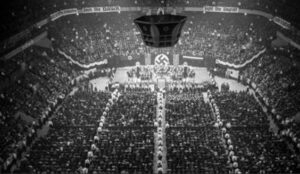
 I think that we can all say that we have found ourselves on the wrong side of history…at the very least our belief system. That is really where most of the world found themselves when Adolf Hitler was elected to office, and almost immediately began to pour out his evil plan for the world, and his hatred for anyone not Aryan, which in Nazi ideology, “denotes white non-Jewish people, especially those of northern European origin or descent typically having blond hair and blue eyes and regarded as a supposedly superior racial group.” Hitler had so deceived the world, in fact, that just a short six and a half months before Hitler invaded Poland, New York City’s Madison Square Garden hosted a rally to celebrate the rise of Nazism in Germany!! More than 20,000 people were in attendance. They raised Nazi salutes toward a 30-foot-tall portrait of George Washington flanked by swastikas. Of course, not everyone was fooled by Hitler, and in fact the 20,000 were a very small percentage, but these 20,000 were, whether they ever understood it or not, on the wrong side of history, trying to follow a man who was insanely evil, murderous, and racist. Outside, police and some 100,000 protestors, who saw right through Hitler’s beliefs, gathered.
I think that we can all say that we have found ourselves on the wrong side of history…at the very least our belief system. That is really where most of the world found themselves when Adolf Hitler was elected to office, and almost immediately began to pour out his evil plan for the world, and his hatred for anyone not Aryan, which in Nazi ideology, “denotes white non-Jewish people, especially those of northern European origin or descent typically having blond hair and blue eyes and regarded as a supposedly superior racial group.” Hitler had so deceived the world, in fact, that just a short six and a half months before Hitler invaded Poland, New York City’s Madison Square Garden hosted a rally to celebrate the rise of Nazism in Germany!! More than 20,000 people were in attendance. They raised Nazi salutes toward a 30-foot-tall portrait of George Washington flanked by swastikas. Of course, not everyone was fooled by Hitler, and in fact the 20,000 were a very small percentage, but these 20,000 were, whether they ever understood it or not, on the wrong side of history, trying to follow a man who was insanely evil, murderous, and racist. Outside, police and some 100,000 protestors, who saw right through Hitler’s beliefs, gathered.
The organization who was behind the February 20, 1939 event, was the German American Bund (“Bund” is German for “federation”), had advertised the event as a “Pro American Rally.” The antisemitic organization held Nazi summer camps for youth and their families during the 1930s. Doesn’t that sound a lot like Hitler’s Youth Camps, that later turned into just the Hitler Youth, where he forcefully took children from their parents saying that the parents were ill-equipped to properly raise their children. Then, he turned those youth into killing machines, with no regard for human life. The Bund’s youth members were present at the February 20th rally, as were the Ordnungsdienst, or OD, the group’s vigilante police force who dressed in the style of Hitler’s SS officers. In Germany, these were the Jewish Ghetto Police or Jewish Police Service (German: Jüdische, Ghetto-Polizei, or Jüdischer Ordnungsdienst), also called the Jewish Police by Jews, and they were auxiliary police units organized within the Nazi ghettos by local Judenrat (Jewish councils). Their “job” was to keep order, or rather monitor the orderly persecution and murder of the Jewish people.
At the rally, there were banners hanging with messages like “Stop Jewish Domination of Christian Americans” and “Wake Up America. Smash Jewish Communism.” When the Bund’s national leader, Fritz Kuhn, gave his closing speech, he referred to President Franklin Delano Roosevelt as “Rosenfield” and Manhattan District Attorney Thomas Dewey as “Thomas Jewey.” Kuhn, a naturalized American who lost his citizenship during World War II, declared, “We, with American ideals, demand that our government shall be returned to the American people who founded it. If you ask what we are actively fighting for under our charter: First, a socially just, white, Gentile-ruled United States. Second, Gentile-controlled labor unions, free from Jewish Moscow-directed domination.” Isadore Greenbaum, a brave Jewish-American man, interrupted Kuhn’s speech by charging the stage in protest. Undaunted, the police and the vigilante force quickly tackled him and proceeded to beat him up on stage. The crowd cheered as they threw him off stage, pulling his pants down in the process. Police charged Greenbaum with disorderly conduct and gave him a $25 fine, which today would have equaled about $450. They were not only intent on inflicting pain, but also humiliation. They are people who have stepped into the insane world of evil. Definitely the wrong side of history.
At the time the rally took place, Hitler was completing his sixth concentration camp. The protesters, many of them Jewish Americans, were trying to call attention to what was happening in Germany, saying that it could happen in the United States. Their fliers proclaimed, “Don’t wait for the concentration camps—Act now!” Outside the rally, people carried signs with messages like “Smash Anti-Semitism” and “Give me a gas mask, I can’t stand the smell of Nazis.” The police responded to the protesters with violent attacks. The night was riddled with violence. One protester escaped a mounted police officer, by punching his horse in the face. As the rally broke up, some protesters slipped by the police to punch departing Nazis in the face.
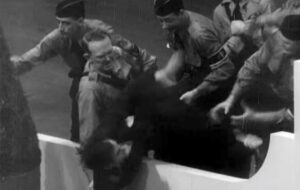
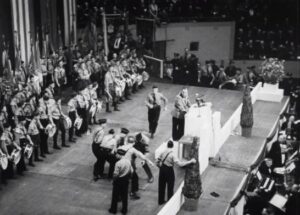 Looking back on how the Nazi history played out, and especially the atrocities of Hitler, I wonder if the people who were at the rally in support of Hitler felt about their…hero now. I suppose that being obsessed with evil, they might have been fine with the Holocaust, and all of the killing that took place. All we can hope is that maybe at least a few of then saw the error of their ways, and realized just how evil Hitler and the Third Reich really were.
Looking back on how the Nazi history played out, and especially the atrocities of Hitler, I wonder if the people who were at the rally in support of Hitler felt about their…hero now. I suppose that being obsessed with evil, they might have been fine with the Holocaust, and all of the killing that took place. All we can hope is that maybe at least a few of then saw the error of their ways, and realized just how evil Hitler and the Third Reich really were.
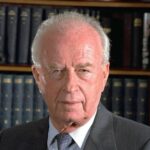
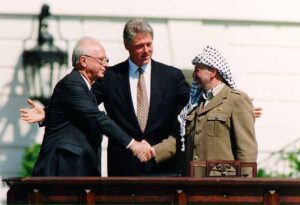 Since time began, people have hoped for peace, and ended up in a battle. While “world peace” will likely never be an option, at least not in this world, governments continue to try, and those who oppose peace continue to do their best to sabotage the plans for peace. Israel has often been at the center of the battle for peace, which makes no logical sense. The other Arab nations have long been after the land, small as it is, that belongs to Israel. I never understood how they could covet the small piece of land that Israel had. The reality is that the Arab nations simply don’t want Israel to exist at all.
Since time began, people have hoped for peace, and ended up in a battle. While “world peace” will likely never be an option, at least not in this world, governments continue to try, and those who oppose peace continue to do their best to sabotage the plans for peace. Israel has often been at the center of the battle for peace, which makes no logical sense. The other Arab nations have long been after the land, small as it is, that belongs to Israel. I never understood how they could covet the small piece of land that Israel had. The reality is that the Arab nations simply don’t want Israel to exist at all.
In 1995, a rally was being held in support of the Oslo Accords at the Kings of Israel Square in Tel Aviv. A number of people had warned Yitzhak Rabin, the fifth prime minister of Israel, that his life could be in danger, but he would not back down. The Oslo Accords was a pair of agreements between Israel and the Palestine Liberation Organization (PLO). The Oslo I Accord was signed in Washington DC, in 1993. The Oslo II Accord was signed in Taba, Egypt, in 1995. The problem with these agreements is that the battle between these two groups goes so much deeper than just who owns the land. These nations are related and have been in a feud since the time of Jacob and Esau in Biblical days. Nevertheless, nations have tried to bring about peace between the two nations ever since the battle began.
On November 4, 1995 (12 Marcheshvan 5756 on the Hebrew calendar) at 9:30pm, at the end of the rally. An Israeli ultranationalist named Yigal Amir, who radically opposed Prime Minister Yitzhak Rabin’s peace initiative, and particularly the signing of the Oslo Accords, took it upon himself, to assassinate Yitzhak Rabin. The Likud leader and future prime minister, Benjamin Netanyahu, told Rabin’s government that withdrawing from any “Jewish” land was heresy, which I would have to agree with, because the land had been given to them by God. They believed that Rabin was probably too secular and too far removed from the Biblical Jewish tradition and Jewish values, but assassination is never the answer.
Conservative rabbis associated with the settlers’ movement prohibited territorial concessions to the Palestinians and forbade soldiers in the Israel Defense Forces from evacuating Jewish settlers under the accords. Some rabbis proclaimed “din rodef” based on a traditional Jewish law of self-defense, against Rabin personally, arguing that the Oslo Accords would endanger Jewish lives. The whole situation, which was “designed” to bring “peace,” took on a completely different tone…chaos. While I would never condone violence or assassination, I 
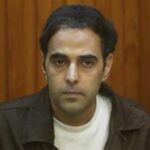 don’t think Israel should ever be forced to give up parts of its land, and unfortunately, any peace agreement with the Palestinians always includes taking Israeli land, when Arab land is already far, far bigger. During the trial, Amir admitted to the assassination of Yitzhak Rabin and claimed that he was justified in doing so, saying that Amir he was “satisfied” and was acting on the “orders of God.” Following the trial, Amir was sentenced to life imprisonment for the murder of Rabin.
don’t think Israel should ever be forced to give up parts of its land, and unfortunately, any peace agreement with the Palestinians always includes taking Israeli land, when Arab land is already far, far bigger. During the trial, Amir admitted to the assassination of Yitzhak Rabin and claimed that he was justified in doing so, saying that Amir he was “satisfied” and was acting on the “orders of God.” Following the trial, Amir was sentenced to life imprisonment for the murder of Rabin.

 Until August 18, 1941, Adolf Hitler had been systematically murdering the mentally ill and developmentally disabled people in Germany, but word was getting out, and the “good” people of Germany were understandably outraged by such an evil practice. The people began protesting, and in an effort to avoid rioting, Hitler announced on this day in 1941, that the practice would cease. I’m sure the people were glad, and they most likely thought they had won this battle, but as we all know, Adolf Hitler is a man who lies…in fact it was all lies!!
Until August 18, 1941, Adolf Hitler had been systematically murdering the mentally ill and developmentally disabled people in Germany, but word was getting out, and the “good” people of Germany were understandably outraged by such an evil practice. The people began protesting, and in an effort to avoid rioting, Hitler announced on this day in 1941, that the practice would cease. I’m sure the people were glad, and they most likely thought they had won this battle, but as we all know, Adolf Hitler is a man who lies…in fact it was all lies!!
The killing began in 1939, when head of Hitler’s Euthanasia Department, Dr Viktor Brack oversaw the creation of the T.4 program. At first, the program began systematically killing of children deemed “mentally defective.” Children were transported from all over Germany to a Special Psychiatric Youth Department, after being told that the children were going to be treated there, but they were killed instead. Parents were told that their children had become ill, and simply died. Later, because of Hitler’s hatred mainly for Jewish people, certain criteria were established for non-Jewish children. Even if they “qualified” to be killed because of their mental issues, they had to be “certified” mentally ill, schizophrenic, or incapable of working for one reason or another before they could be killed. Jewish children already in mental hospitals, whatever the reason or whatever the prognosis, were automatically to be subject to the program and killed. The victims were either injected with lethal substances or were led to “showers” where the children sat as gas flooded the room through water pipes. Later the program was expanded to include adults.
As this practice continued, the people started getting angry, and before long protests began mounting within Germany, especially by doctors and pastors. A few of these people even had the courage to write Hitler directly and describe the T.4 program as “barbaric” but others circulated their opinions more discreetly. Heinrich Himmler, head of the SS and the man who would direct the systematic extermination of European Jewry, had only one regret: that the SS had not been put in charge of the whole affair. “We know how to deal with it correctly, without causing useless uproar among the people.”
In 1941, when Bishop Count Clemens von Galen denounced the euthanasia program from his pulpit, Hitler decided that he did not need such publicity. He ordered the program suspended but didn’t tell the German people that the suspension was only to be in Germany. Still, even though it was suspended in Germany, 50,000 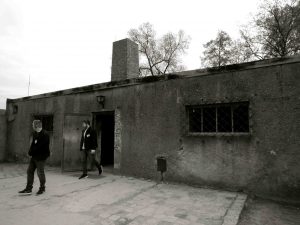
 people had already fallen victim to the hideous program. Then came the “other shoe dropping” as the practice was picked up in earnest in occupied Poland. Hitler was a liar, and he was evil. He assumed that the people of the world were stupid, and he could hide his horrific practice from them. Stopping the practice in the name of humane practices…not!! Lies!! All of it!!
people had already fallen victim to the hideous program. Then came the “other shoe dropping” as the practice was picked up in earnest in occupied Poland. Hitler was a liar, and he was evil. He assumed that the people of the world were stupid, and he could hide his horrific practice from them. Stopping the practice in the name of humane practices…not!! Lies!! All of it!!
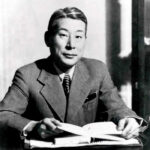 When we thing of people who were heroes for the Jewish people during World War II, we seldom think of true enemies of the Allied Nations. Still, there are people in all nations, no matter how evil the nation, who are good. One such man was Chiune Sugihara, a Japanese diplomat who served as vice-consul for the Japanese Empire in Kaunas, Lithuania. Sugihara was born on January 1, 1900 in Mino, Gifu prefecture, to a middle-class father, Yoshimi Sugihara and an upper-middle class mother, Yatsu Sugihara.
When we thing of people who were heroes for the Jewish people during World War II, we seldom think of true enemies of the Allied Nations. Still, there are people in all nations, no matter how evil the nation, who are good. One such man was Chiune Sugihara, a Japanese diplomat who served as vice-consul for the Japanese Empire in Kaunas, Lithuania. Sugihara was born on January 1, 1900 in Mino, Gifu prefecture, to a middle-class father, Yoshimi Sugihara and an upper-middle class mother, Yatsu Sugihara.
Sugihara became the vice-consul in 1939. His duties included reporting on Soviet and German troop movements, and to find out if Germany planned an attack on the Soviets and, if so, to report the details of this attack to his superiors in Berlin and Tokyo. As vice-consul, I’m sure he never expected to go against the orders of his superiors. I’m sure that he thought, as most of us do, that our country is the best one, and that our government is honorable and basically good…until we don’t. During the second world war, Sugihara made the decision…against orders from superiors…to help 6,000 Jews escape Europe by issuing transit visas to them, so that they could travel through Japanese territory. By doing this, he was risking his job and the lives of his family, but he knew that the things that were happening to the Jews were wrong, and he could not stand by and be a party to their deaths. The Jews that Sugihara helped were refugees from German-occupied Western Poland and Soviet-occupied Eastern Poland, as well as residents of Lithuania. I’m sure that Sugihara’s superiors didn’t want to anger their ally, Adolf Hitler, so they had told Sugihara to turn a blind eye to the fate of the Jewish people, and let the Nazis do what they wanted to do to them. But, Sugihara had a conscience, and he could not allow he Jews to be murdered in such a horrific fashion. He had to help as many as he could.
From July 18 to August 28, 1940, Sugihara being aware that Jewish visa applicants were in danger if they 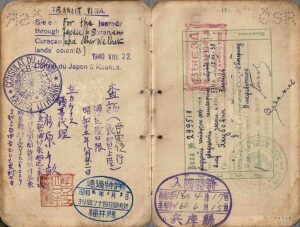 stayed behind, Sugihara decided to ignore his orders and issued ten-day visas to Jews for transit through Japan. Given his inferior post and the culture of the Japanese Foreign Service bureaucracy, this was an unusual act of disobedience. Sugihara spoke to Soviet officials who agreed to let the Jews travel through the country via the Trans-Siberian Railway…at five times the standard ticket price, of course. I guess there is no price too high…seriously. Sugihara continued to spend 18 to 20 hours a day writing hand-write visas, reportedly producing a normal month’s worth of visas each day, until September 4th, when he had to leave his post before the consulate was closed. While his time was cut short at that consulate, he had granted thousands of visas to Jews, many of whom were heads of households, thus permitting them to take their families with them. It is said that before he left, he handed the official consulate stamp to a refugee so that more visas could be forged, but his son, Nobuki Sugihara, insists that his father never gave the stamp to anyone. According to witnesses, he was still writing visas while in transit from his hotel and after boarding the train at the Kaunas Railway Station, throwing visas into the crowd of desperate refugees out of the train’s window even as the train pulled out. It was an insanely brave act, and it did not go unnoticed.
stayed behind, Sugihara decided to ignore his orders and issued ten-day visas to Jews for transit through Japan. Given his inferior post and the culture of the Japanese Foreign Service bureaucracy, this was an unusual act of disobedience. Sugihara spoke to Soviet officials who agreed to let the Jews travel through the country via the Trans-Siberian Railway…at five times the standard ticket price, of course. I guess there is no price too high…seriously. Sugihara continued to spend 18 to 20 hours a day writing hand-write visas, reportedly producing a normal month’s worth of visas each day, until September 4th, when he had to leave his post before the consulate was closed. While his time was cut short at that consulate, he had granted thousands of visas to Jews, many of whom were heads of households, thus permitting them to take their families with them. It is said that before he left, he handed the official consulate stamp to a refugee so that more visas could be forged, but his son, Nobuki Sugihara, insists that his father never gave the stamp to anyone. According to witnesses, he was still writing visas while in transit from his hotel and after boarding the train at the Kaunas Railway Station, throwing visas into the crowd of desperate refugees out of the train’s window even as the train pulled out. It was an insanely brave act, and it did not go unnoticed.
In 1985, the State of Israel honored Sugihara as one of the Righteous Among the Nations for his actions…the highest honor given to non-Jews.. He is the only Japanese national ever to receive it. The year 2020 was “The Year of Chiune Sugihara” in Lithuania. It has been estimated as many as 100,000 people alive today are the descendants of the recipients of Sugihara visas. When asked by Moshe Zupnik why he risked his career to save other people, he said simply, “I do it just because I have pity on the people. They want to get out so I let them 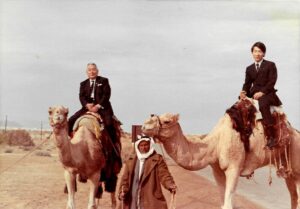 have the visas.”
have the visas.”
Chiune Sugihara died at a hospital in Kamakura, on July 31, 1986. Despite the publicity given him in Israel and other nations, Sugihara remained virtually unknown in his home country. I’m sure they didn’t consider him anything more than a criminal. Only when a large Jewish delegation from around the world, including the Israeli ambassador to Japan, attended his funeral, did his neighbors find out what he had done. His subsequent considerable posthumous acclaim contrasts with the obscurity in which he lived following the loss of his diplomatic career.
 I read a book the other day, called “The Librarian of Auschwitz.” It is a true story about a woman named Dita Polachova , who at the age of 14 years was imprisoned at Auschwitz. I was moved by the sacrifices the people in her network made, as well as the many people I have read about in the past. We, in America, don’t often understand the need to sacrifice our own safety, and many people wouldn’t do it even if it was necessary. Dita was one of those people who would.
I read a book the other day, called “The Librarian of Auschwitz.” It is a true story about a woman named Dita Polachova , who at the age of 14 years was imprisoned at Auschwitz. I was moved by the sacrifices the people in her network made, as well as the many people I have read about in the past. We, in America, don’t often understand the need to sacrifice our own safety, and many people wouldn’t do it even if it was necessary. Dita was one of those people who would.
She was in charge of eight books that someone had smuggled into Auschwitz, the first sacrifice. It was something that could have cost the smuggler his life, but he saw value in the ability to get the books into the hands of the family camp, and the children’s school at Auschwitz. The family camp, and the coordinated children’s school was unique to Auschwitz. Most camps did not allow families to stay together. In fact, most of the children were killed upon arrival at the camps. The family camp and the children’s school were the  brainstorm sacrifice Freddy Hirsch, who was a Jewish athlete, one of the great runners. He was almost impossible to beat. I don’t know if that was what gave him some pull or not, but he made a sacrifice that turned out to be the ultimate sacrifice. Fredy Hirsch would not survive Auschwitz. It wasn’t because the books were found, but rather that the Nazis were taking away the family camp and children’s school. He took his own life. He assumed that the precious books would be lost, but he had underestimated Dita, who managed to get the books back in their hiding place, where they were not found by the Nazis.
brainstorm sacrifice Freddy Hirsch, who was a Jewish athlete, one of the great runners. He was almost impossible to beat. I don’t know if that was what gave him some pull or not, but he made a sacrifice that turned out to be the ultimate sacrifice. Fredy Hirsch would not survive Auschwitz. It wasn’t because the books were found, but rather that the Nazis were taking away the family camp and children’s school. He took his own life. He assumed that the precious books would be lost, but he had underestimated Dita, who managed to get the books back in their hiding place, where they were not found by the Nazis.
Dita outlived the Nazi reign of terror and went on to lead a happy life, despite the memories that would haunt her for the rest of her life. She married Arvid Harnack, an author, who with the writer Adam Kuckhoff and his wife Greta, who with Mildred Fish-Harnack brought together a discussion circle which debated political perspectives on the time after the National Socialists’ expected downfall or overthrow. From these meetings arose what the Gestapo called the Red Orchestra resistance group.
The Red Orchestra, Die Rote Kapelle in German, or the Red Chapel as it was known in Germany, was the name given by the Gestapo to anti-Nazi resistance workers during World War II. The members included friends of Harro Schulze-Boysen and Arvid Harnack in Berlin, as well as groups working independently of these intelligence groups, working in Paris and Brussels, that were built up on behalf of Leopold Trepper on behalf of the Soviet Main Directorate of State Security. The Red Orchestra was neither  directed by Soviet communists nor under a single leadership but a network of groups and individuals, often operating independently contrary to legend. About 400 members are known by name at this time. They printed illegal leaflets hoping to incite civil disobedience, helped Jews and opposition escape the regime, documented the crimes of the Nazi regime, and forwarded military intelligence to the Allies. The public perception of the “Red Orchestra” is characterized by the transfigurations of the post-war years and the Cold War.
directed by Soviet communists nor under a single leadership but a network of groups and individuals, often operating independently contrary to legend. About 400 members are known by name at this time. They printed illegal leaflets hoping to incite civil disobedience, helped Jews and opposition escape the regime, documented the crimes of the Nazi regime, and forwarded military intelligence to the Allies. The public perception of the “Red Orchestra” is characterized by the transfigurations of the post-war years and the Cold War.
The network of people willing to risk their own lives during the Holocaust years was extensive. From Jews who risked their lives to make life better in and out of the camps, to non-Jews who risked their lives to fight against the atrocities of the Nazi Regime and the Third Reich. These were brave people who knew that bravery isn’t about being fearless, but rather being brave despite the fear. Their stories deserve to be told. They deserve recognition, because in the face of the worst odds, they took action anyway. That is true bravery, and true sacrifice.
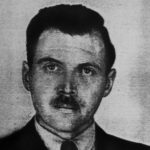
 Most people would not think that the things Dr Gisella Perl did at Auschwitz during the Holocaust were angelic in any way, but the prisoners there, the women whose lives she saved would say otherwise. To them, she was an angel of mercy…even if some of the things she had to do were so horrific that she tried to commit suicide after the war. Dr Perl was a successful Jewish gynecologist from Romania, where she lived with her husband and two children. Right before the Nazi soldiers stormed her home, she was able to hid her daughter with some non-Jews, but she, her husband, son, her elderly parents who captured and taken to Auschwitz. Once they arrived, Gisella was separated from her family. They would be sent to be slave labor or to be killed. She would never see any of them again. Because she was a doctor, she was to be used in a different way…a horrifically gruesome way. She was to work for Dr Joseph Mengele, to be at his beck and call, and the things he made her do nearly killed her. She was a doctor. She was supposed to save lives, not be involved in ending them…or worse, but that was the position he put her in.
Most people would not think that the things Dr Gisella Perl did at Auschwitz during the Holocaust were angelic in any way, but the prisoners there, the women whose lives she saved would say otherwise. To them, she was an angel of mercy…even if some of the things she had to do were so horrific that she tried to commit suicide after the war. Dr Perl was a successful Jewish gynecologist from Romania, where she lived with her husband and two children. Right before the Nazi soldiers stormed her home, she was able to hid her daughter with some non-Jews, but she, her husband, son, her elderly parents who captured and taken to Auschwitz. Once they arrived, Gisella was separated from her family. They would be sent to be slave labor or to be killed. She would never see any of them again. Because she was a doctor, she was to be used in a different way…a horrifically gruesome way. She was to work for Dr Joseph Mengele, to be at his beck and call, and the things he made her do nearly killed her. She was a doctor. She was supposed to save lives, not be involved in ending them…or worse, but that was the position he put her in.
First, he told her to round up any pregnant women. She thought she was going to be caring for these women, but after she turned over 50 women, and they were immediately sent to the gas chambers, a horrified Dr Perl made up her mind that somehow, she would do whatever she could to thwart the Nazis horrible plans. She had not understood what was goin to happen to the pregnant women she turned over, and the thought of her part in their loss of live, nearly killed her. The things she did after that first horrible mistake, might not seem to most people, including me, like the actions of an angel, but I can see that she had no real choices.
The women Dr Perl cared for had been treated horrible by the Nazi soldiers. Their wounds consisted of lashes from a whip on bare skin, to bites from dogs, to infections from the horribly unsanitary conditions. When she entered the room, the prisoners in the infirmary knew that she was there to help. That was the good part of her life at Auschwitz, but Dr Mengele was a cruel and evil man, and he was determined to kill any pregnant woman. This left Dr Perl with an extremely difficult decision to make. She could watch as the mother and baby were put to death, or she could abort the babies and give the mothers the chance to live to have a family later. The choice was unthinkable to her, but it was also a non-choice. She could lose one life or both. The abortions were performed in secret, often in darkness, and the women whose lives she saved…well, they were grateful, even 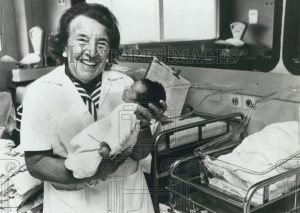
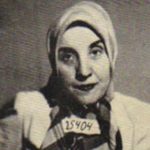 though they mourned their babies and never truly got over the decisions they and Dr Perl made. Later in life, after the war, Dr Perl went on to deliver many live babies, rejoicing over each. She was bold with God, telling him, when a baby seemed unlikely to make it, that God owed her this baby, because of those she could not save in the Holocaust. God honored her prayers, and gave her the healthy babies she requested of Him. I think He considered her the Angel of Auschwitz too.
though they mourned their babies and never truly got over the decisions they and Dr Perl made. Later in life, after the war, Dr Perl went on to deliver many live babies, rejoicing over each. She was bold with God, telling him, when a baby seemed unlikely to make it, that God owed her this baby, because of those she could not save in the Holocaust. God honored her prayers, and gave her the healthy babies she requested of Him. I think He considered her the Angel of Auschwitz too.
 Born Jewish, on April 4, 1922, in Berlin, Germany, did not necessarily set Marie Jalowicz up for a long carefree life. Marie was 11 years old when the Nazi Party came to power, and soon after began to imprison her family members. By age 20, Marie was forced to fend for herself. She found herself faced with the difficult task of constantly avoiding the Nazis. For Marie, this meant somehow assimilating into German life…basically pretending to be a non-Jew. I can’t imagine having to pretend to be a nationality other than my own, but that is what she had to do. Anything about her that was Jewish had to be set aside, forgotten, or hidden from the eyes and ears of the Nazis, who seemed to be everywhere around her.
Born Jewish, on April 4, 1922, in Berlin, Germany, did not necessarily set Marie Jalowicz up for a long carefree life. Marie was 11 years old when the Nazi Party came to power, and soon after began to imprison her family members. By age 20, Marie was forced to fend for herself. She found herself faced with the difficult task of constantly avoiding the Nazis. For Marie, this meant somehow assimilating into German life…basically pretending to be a non-Jew. I can’t imagine having to pretend to be a nationality other than my own, but that is what she had to do. Anything about her that was Jewish had to be set aside, forgotten, or hidden from the eyes and ears of the Nazis, who seemed to be everywhere around her.
Marie knew that as the situation for Jews in Nazi Germany deteriorated, things would grow steadily worse for her. She had to somehow come up with a way to virtually hide in plain sight. When a postman wrongly delivered a letter for a job offer intended for the neighbor in 1941, she told a postman that her “neighbor” Marie was taken by the Nazis, then she simply started walking around without a star on her jacket. She was successfully living under a false identity. She took the job and began  working at the Siemens arms factory in her neighbor’s place. While living this double life, Jalowicz sabotaged production at the arms factory where she worked. Marie evaded Nazi capture through a long string of forgeries, impersonations, and help from people from every walk of life. Marie became Johanna Koch, using her wit and charm to seduce people in positions that could help her and moved around constantly. She took the words of a friend of hers to heart, “In absurd times, everything is absurd. You can save yourselves only by absurd means since the Nazis are out to murder us all.” On more than one occasion she tried to flee Germany, narrowly evading apprehension and escaping back to her homeland each time. She relocated often, and at one point was sold to an abusive Nazi with late-stage syphilis for 15 marks, which added to her cover as a non-Jew. In the coming years, she took menial jobs and lived in several Berlin flats, at times with roommates who were fervent Nazis. I can’t imagine how awful it was for her.
working at the Siemens arms factory in her neighbor’s place. While living this double life, Jalowicz sabotaged production at the arms factory where she worked. Marie evaded Nazi capture through a long string of forgeries, impersonations, and help from people from every walk of life. Marie became Johanna Koch, using her wit and charm to seduce people in positions that could help her and moved around constantly. She took the words of a friend of hers to heart, “In absurd times, everything is absurd. You can save yourselves only by absurd means since the Nazis are out to murder us all.” On more than one occasion she tried to flee Germany, narrowly evading apprehension and escaping back to her homeland each time. She relocated often, and at one point was sold to an abusive Nazi with late-stage syphilis for 15 marks, which added to her cover as a non-Jew. In the coming years, she took menial jobs and lived in several Berlin flats, at times with roommates who were fervent Nazis. I can’t imagine how awful it was for her.
Marie went on to become a German philologist and historian of philosophy, pursued a career in academia, 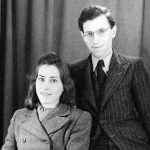 and received a Ph.D. in ancient literature and art history at Berlin’s Humboldt University. Then, after the war, she become a professor at Humboldt University, where she worked until her death in 1998. Just before her death she recorded 77 cassette tapes of audio with her son, Hermann. In the tapes, for the first time, Marie chronicled her experience during the Nazi reign. They were later compiled into a book called, Underground in Berlin: A Young Woman’s Extraordinary Tale of Survival in the Heart of Nazi Germany. She became known to larger audiences for this, her autobiographical account of the persecution of Jews in Nazi Germany, which was published posthumously. Marie died on September 16, 1998. She returned to her original identity only on her deathbed. Her mother died of cancer in 1938. Her father died in 1941. She is survived by her only son, Hermann Simon.
and received a Ph.D. in ancient literature and art history at Berlin’s Humboldt University. Then, after the war, she become a professor at Humboldt University, where she worked until her death in 1998. Just before her death she recorded 77 cassette tapes of audio with her son, Hermann. In the tapes, for the first time, Marie chronicled her experience during the Nazi reign. They were later compiled into a book called, Underground in Berlin: A Young Woman’s Extraordinary Tale of Survival in the Heart of Nazi Germany. She became known to larger audiences for this, her autobiographical account of the persecution of Jews in Nazi Germany, which was published posthumously. Marie died on September 16, 1998. She returned to her original identity only on her deathbed. Her mother died of cancer in 1938. Her father died in 1941. She is survived by her only son, Hermann Simon.
 When most people hear the word Nazi, they don’t associate it with anything good. I don’t even think the Nazis of today consider themselves to be an organization for good. Probably the most atrocious part of Nazi Germany was the death camps where the Jewish people were confined, tortured with experimentation, and gassed to their deaths. One such camp, Auschwitz was known for cruelty so egregious that in 1947, after the war was over, a Polish court convened a special tribunal to mete out justice to 40 former Auschwitz personnel.
When most people hear the word Nazi, they don’t associate it with anything good. I don’t even think the Nazis of today consider themselves to be an organization for good. Probably the most atrocious part of Nazi Germany was the death camps where the Jewish people were confined, tortured with experimentation, and gassed to their deaths. One such camp, Auschwitz was known for cruelty so egregious that in 1947, after the war was over, a Polish court convened a special tribunal to mete out justice to 40 former Auschwitz personnel.
The German invasion of Poland in September 1939, sparked World War II, and the Germans immediately converted Auschwitz I, a former army barracks, to hold Polish political prisoners. The first prisoners, German criminals brought to the camp as functionaries, arrived in May 1940, and the first gassing of prisoners took place in block 11 of Auschwitz I in September 1941. Auschwitz II–Birkenau went on to become a major site of the Nazis’ “Final Solution” to the Jewish Question…basically Hitler’s hatred of the Jewish people. Transport trains delivered Jews from all over German-occupied Europe to the camp’s gas chambers from early 1942 until late 1944. Of the estimated 1.3 million people sent to Auschwitz, at least 1.1 million died, approximately 90% of them Jews. It is thoughts that 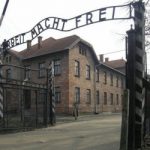 one in six Jews killed in the Holocaust died at Auschwitz. Others deported to Auschwitz included 150,000 non-Jewish Poles, 23,000 Roma, 15,000 Soviet prisoners of war, 400 Jehovah’s Witnesses, tens of thousands of others of diverse nationalities, and an unknown number of gay men. Many of those not killed in the gas chambers died because of starvation, forced labor, infectious diseases, individual executions, and medical experiments.
one in six Jews killed in the Holocaust died at Auschwitz. Others deported to Auschwitz included 150,000 non-Jewish Poles, 23,000 Roma, 15,000 Soviet prisoners of war, 400 Jehovah’s Witnesses, tens of thousands of others of diverse nationalities, and an unknown number of gay men. Many of those not killed in the gas chambers died because of starvation, forced labor, infectious diseases, individual executions, and medical experiments.
The appalling conduct of the Nazi staff at Auschwitz is among the worst treatment of prisoners in human history. In fact, the cruelty routinely perpetrated was so horrific that, in 1947, a Polish court convened a special tribunal to finally deal out justice to 40 former Auschwitz personnel. Of the defendants, 21 were condemned and executed, 18 were convicted and given jail sentences, but one man, Dr Hans Munch, was acquitted. That one acquittal might have been considered an outrage to the world, were it not for the testimony of former prisoners. The former prisoners testified that Munch had been kind and humane. The said that he gave them food and extended bogus experiments on female prisoners because he knew they would be gassed once the 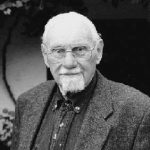 experiments were concluded. Most impressive, Munch refused to participate in the selection process dictating who lived or died at Auschwitz. That in and of itself could have brought about his own death. In the final days of the war, his last official act at a concentration camp was to advise an inmate on how to escape, wish him good luck, and hand the prisoner his service revolver.
experiments were concluded. Most impressive, Munch refused to participate in the selection process dictating who lived or died at Auschwitz. That in and of itself could have brought about his own death. In the final days of the war, his last official act at a concentration camp was to advise an inmate on how to escape, wish him good luck, and hand the prisoner his service revolver.
Sadly, in later life, Munch was diagnosed with Alzheimer’s Disease, ignited a controversy later in his life with bizarre interviews about his tenure at Auschwitz. He got quite mixed up about what went on there, and in my opinion, it is a good thing that the prisoners stood up for this one good Nazi, who wasn’t really a Nazi after all.

 On January 30, 1933, President Hindenburg appointed Adolf Hitler chancellor of Germany. It wasn’t because of any election, but rather by a constitutionally questionable deal dreamed up by a small group of conservative German politicians who had given up on parliamentary rule. Little did they know that they were party to appointing one of the worst dictators in history. Their attempt to return Germany to conservative authoritarian rule, backfired miserably when, within two years, Hitler and the Nazis outmaneuvered Germany’s conservative politicians to consolidate a radical Nazi dictatorship that was completely subordinate to Hitler’s personal will. I wonder if President Hindenburg wished he had never met Hitler, much less appointed him to be chancellor.
On January 30, 1933, President Hindenburg appointed Adolf Hitler chancellor of Germany. It wasn’t because of any election, but rather by a constitutionally questionable deal dreamed up by a small group of conservative German politicians who had given up on parliamentary rule. Little did they know that they were party to appointing one of the worst dictators in history. Their attempt to return Germany to conservative authoritarian rule, backfired miserably when, within two years, Hitler and the Nazis outmaneuvered Germany’s conservative politicians to consolidate a radical Nazi dictatorship that was completely subordinate to Hitler’s personal will. I wonder if President Hindenburg wished he had never met Hitler, much less appointed him to be chancellor.
Within days of taking power, the Nazis called for Germany to boycott all Jewish businesses. This unexpected anti-Jewish propaganda was the first of many. Hitler hated the Jewish people. He had no reason for his hatred. The Jewish people had done nothing to warrant Hitler’s hatred and rage. One theory is that Hitler had decided that the Jewish people were an inferior race. That is not such a new thought. It had happened before, to the African slaves in history, who had often been referred to as mud people. The Jews, as with the slaves, were treated horribly.
Another reason Hitler hated the Jewish people, was because following Germany’s loss of World War I, Hitler blamed the Jews and the communists living in Germany. He felt that they were part of a huge conspiracy against the German military. He believed that had it not been for their interference, Britain and the allies would have lost the war. Another possible reason for Hitler’s hatred of the Jews was probably jealousy. After World War I, he saw that a lot of Germans were without jobs and struggling. Instead of looking at the war as the root cause of the economic problem, he blamed the Jews for the sorry state of affairs. Because Adolf Hitler was truly insane, I’m sure that his reason to hate the Jewish people made sense to him, but the reality is that his insane mind was the only place that it made sense.
I’m not sure how he managed to get so many people to agree with is ideas, but somehow he did, and when he decided that all Jewish shops were to be boycotted, and stationed his SA Storm Troopers near the shops to 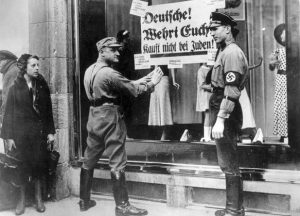
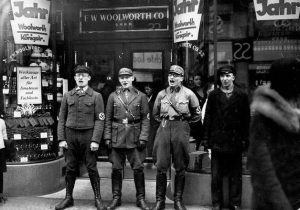
ensure that his plans were carried out, they did as they were told. It wasn’t long after the boycotting of the shops that Hitler took things to the next level, and began hauling the Jewish people to the death camps. As long as he was alive, there was no end to his hatred, and that is definitely not what President Hindenburg or the conservative German politicians had in mind, and I’m sure they wished they had never done it.
 For many years, I have admired Albert Einstein. His mind and his level of intelligence intrigued me, as did his quirkiness. When you think of a genius, your mind automatically produces a picture of a very organized person, who is able to handle any situation, but even geniuses have their issues with things. One well know “weakness” for Einstein was the fact that if something can be written down, it need not take up space in his brain. His brain was very full after all, and clutter was always an issue. That said, if he couldn’t find his train ticket…for the train he took every day from home to work and back…he didn’t know at which stop to get off, because he relied on his ticket to tell him that. I don’t think most of us could even begin to filter our brain in such a way…but Einstein could, and did.
For many years, I have admired Albert Einstein. His mind and his level of intelligence intrigued me, as did his quirkiness. When you think of a genius, your mind automatically produces a picture of a very organized person, who is able to handle any situation, but even geniuses have their issues with things. One well know “weakness” for Einstein was the fact that if something can be written down, it need not take up space in his brain. His brain was very full after all, and clutter was always an issue. That said, if he couldn’t find his train ticket…for the train he took every day from home to work and back…he didn’t know at which stop to get off, because he relied on his ticket to tell him that. I don’t think most of us could even begin to filter our brain in such a way…but Einstein could, and did.
Einstein was a gifted scientist and mathematician. He was most famous for his theory of relativity and the resulting formula relating mass and energy…E = MC². He was the winner of 1921 Nobel Prize in physics for his work on the photoelectric effect, which is also known as the Hertz effect. Einstein was born in Ulm, in the Kingdom of Württemberg in the German Empire, on March 14, 1879. His parents were Hermann Einstein, a salesman and engineer, and Pauline Koch. He didn’t feel the need to celebrate his birthday,saying “It is a known fact that I was born, and that is all that is necessary.” Friends, colleagues and complete strangers still felt the need to send telegrams, cards, letters, gifts, and an elaborate birthday cake.
Being a Jewish man, circumstances in Germany became life threatening for Einstein in the early 1930s, so early in 1933, while on a trip to the United States, he knew he could not go home again, so he moved permanently  to the United States, and worked at Princeton University…a career that would take him to the end of his life on April 18, 1955. Einstein could have been saved, but when he was asked if he wanted to undergo surgery, he refused, saying, “I want to go when I want to go. It is tasteless to prolong life artificially. I have done my share; it is time to go. I will do it elegantly.” After an autopsy, Einstein’s body was cremated and his ashes spread in an undisclosed location.
to the United States, and worked at Princeton University…a career that would take him to the end of his life on April 18, 1955. Einstein could have been saved, but when he was asked if he wanted to undergo surgery, he refused, saying, “I want to go when I want to go. It is tasteless to prolong life artificially. I have done my share; it is time to go. I will do it elegantly.” After an autopsy, Einstein’s body was cremated and his ashes spread in an undisclosed location.
After his passing, another of the multiple quirky aspects of Einstein’s personality came to light when LIFE magazine wrote about a famous picture taken in Albert Einstein’s Princeton office. Einstein’s desk was just as he left it. Here, the picture says, is where Einstein worked, dreamed, lived his singular, principled life to its fullest. “When I was young, all I wanted and expected from life was to sit quietly in some corner doing my work without the public paying attention to me,” said Einstein after being honored at a social function. “And now see what has become of me.”
When I look and Einstein’s desk, it takes me back to the many times my own desk has looked exactly like that. It is another way that the famed scientific and mathematical genius and I are alike. Now, I do not claim to have the IQ of this man, but we do have a few things in common, and the ability to work on top of a stack of papers seems to be one of them. Maybe that and the ability to somewhat filter things out of my mind if they are stored in my phone which could be the same thing as filtering because I have it written down. And because of my shy side, I suppose I can understand his concern over public attention, and yet knowing that sometimes it can’t be helped. When I look at his desk, I can see a man whose mind was fill with many thoughts, making it easy to 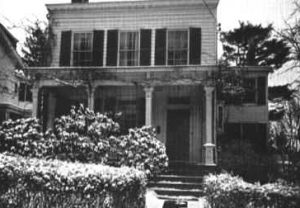 lose himself in his thoughts to the point of seeming to ignore those around him. Those who met Einstein recalled his human side. He “walked to work or rode the bus in bad weather; visited the neighbors’ newborn kittens; greeted carolers on winter nights; refused to update his eyeglass prescription; and declined to wear socks because they would get holes in them. But he didn’t seem to mind fuzzy slippers!” He was his own man with his own ideas, and if those ideas didn’t make sense to those around him, it was simply not his problem. On April 18, 1955, Albert Einstein died soon after a blood vessel burst near his heart. The world mourned Einstein’s death, but true to form, at his request, his office and house were not turned into memorials.
lose himself in his thoughts to the point of seeming to ignore those around him. Those who met Einstein recalled his human side. He “walked to work or rode the bus in bad weather; visited the neighbors’ newborn kittens; greeted carolers on winter nights; refused to update his eyeglass prescription; and declined to wear socks because they would get holes in them. But he didn’t seem to mind fuzzy slippers!” He was his own man with his own ideas, and if those ideas didn’t make sense to those around him, it was simply not his problem. On April 18, 1955, Albert Einstein died soon after a blood vessel burst near his heart. The world mourned Einstein’s death, but true to form, at his request, his office and house were not turned into memorials.

